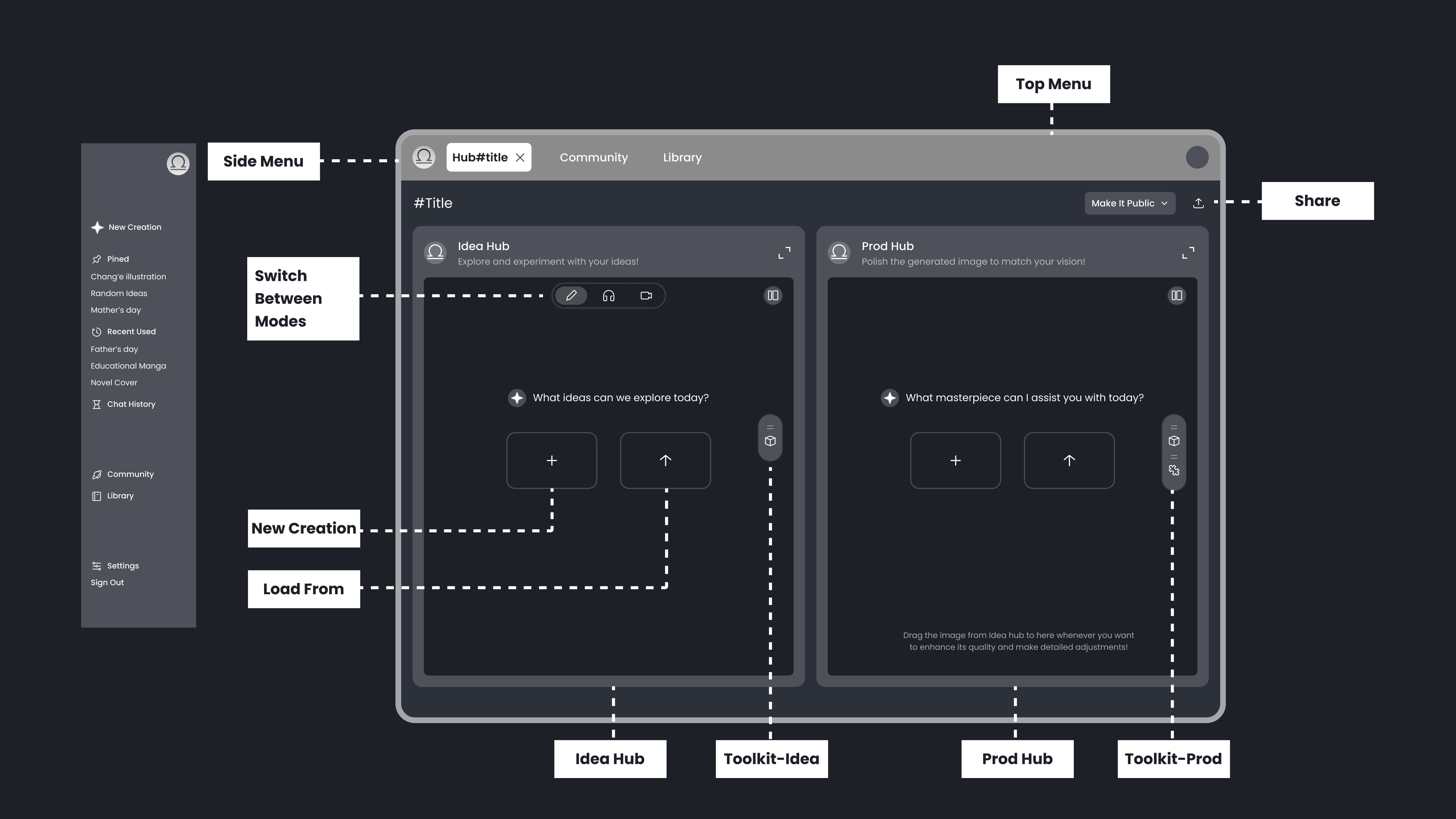An Innovative AI-Driven Image Generation Tool
Type
Year
Key Words
Design In University
2024
UI/UX Generative AI Research
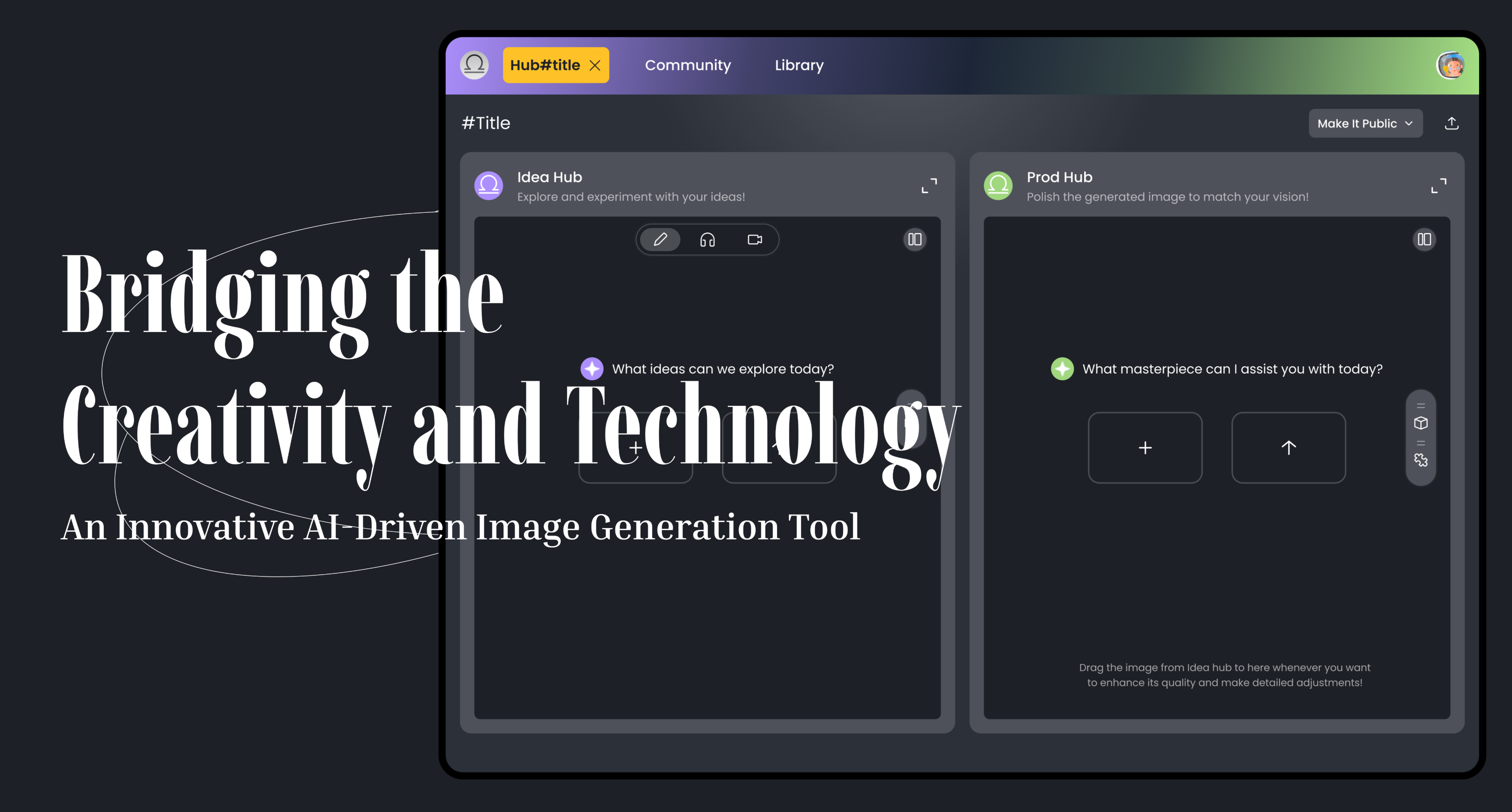
An Innovative AI-Driven Image Generation Tool
Lyra, an innovative AI-driven image generation tool, aims to redefine interactions in image creation by enhancing intuitive and inspiring experiences that express human creativity, while making advanced AI technology accessible and easy to control for all users.

This research is my master’s thesis, conducted during the rapid rise of AI, when discussions about it became widespread. As a user experience designer, many friends and colleagues in creative industries shared with me how they felt pressured to use AI. Our conversations sparked the idea for this topic, which I found fascinating. It’s not just about exploring new technology—it reminded me of why I pursued interaction design in the first place, as I mentioned in my introduction: “My true passion lies in using interaction design to bridge the gap between technology and humanity.”
Design Background
Since the explosion of generative AI (GAI), workflows in creative industries have been revolutionized. Although hybrid intelligence—human-AI collaboration—is seen as the best way to leverage the strengths of both humans and AI, attention has primarily focused on AI model performance.

As noted by Nielsen, interaction design is evolving towards a more intent-based outcome specification. However, this approach has not yet received the level of attention it deserves, which is the gap this research seeks to address. As a user experience designer, I aim to leverage my expertise to explore this emerging interaction model. Given the broad scope of generative AI, I have chosen to focus on a practical application—image generation—to narrow the research and provide meaningful and practical insights.
Outline Of The Research
This is a brief overview of my research. The content marked will be presented on this page, and for the full version, please check the previous links.
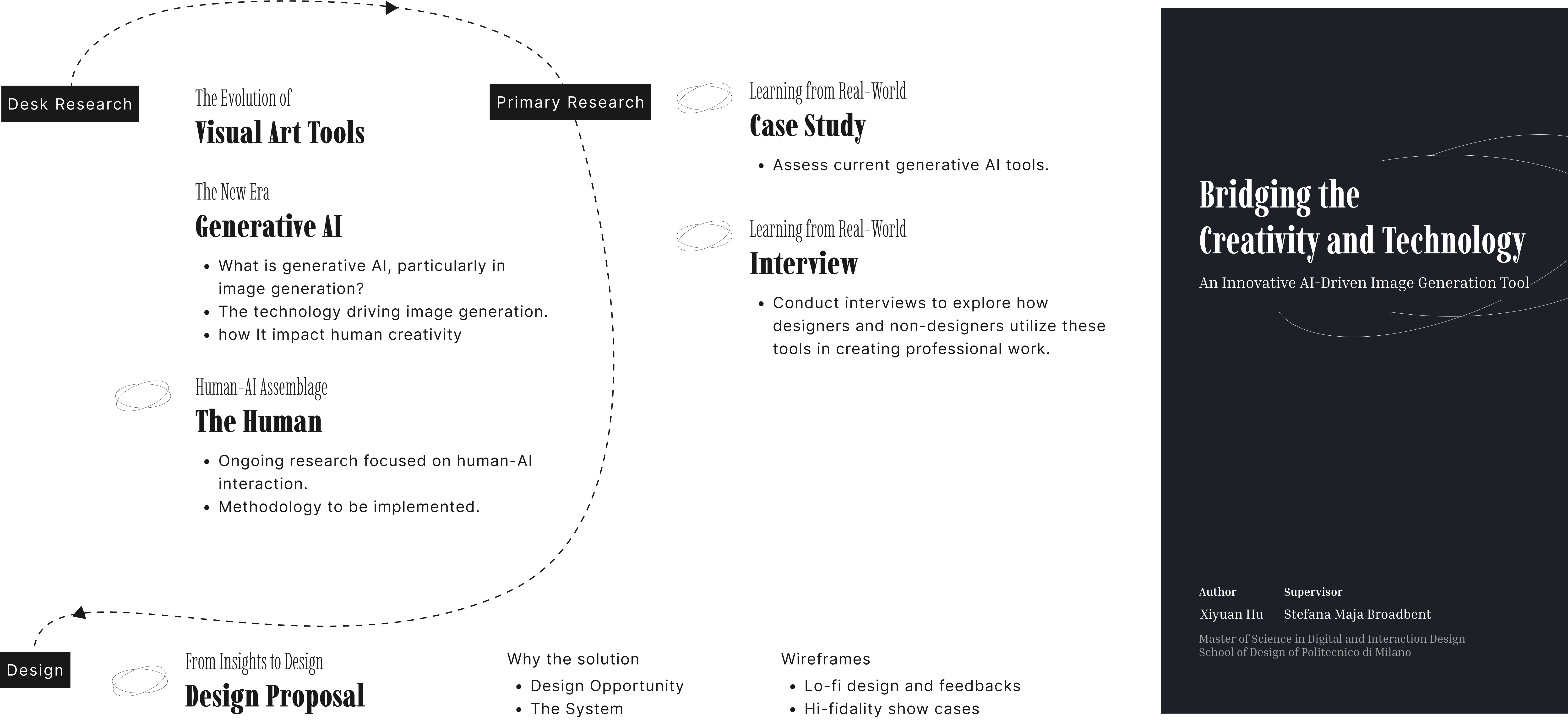
Human-AI Assemblage
The Human
IBM Design Principle For Generative AI Applications
In May 2024, IBM’s research group published design principles specifically for GAI. These principles were developed by referencing past HCI principles, incorporating GAI use cases, mental models, user needs, and practical testing. Given their solid development process and effective test results, this research uses IBM’s design principles as a reference for further exploration of interactions between humans and GAI in image creation tools.
Weisz, J. D., He, J., Muller, M., Hoefer, G., Miles, R., & Geyer, W. (2024, May). Design principles for generative AI applications. In Proceedings of the CHI Conference on Human Factors in Computing Systems (CHI ’24). ACM. http://dx.doi.org/10.1145/3613904.3642466
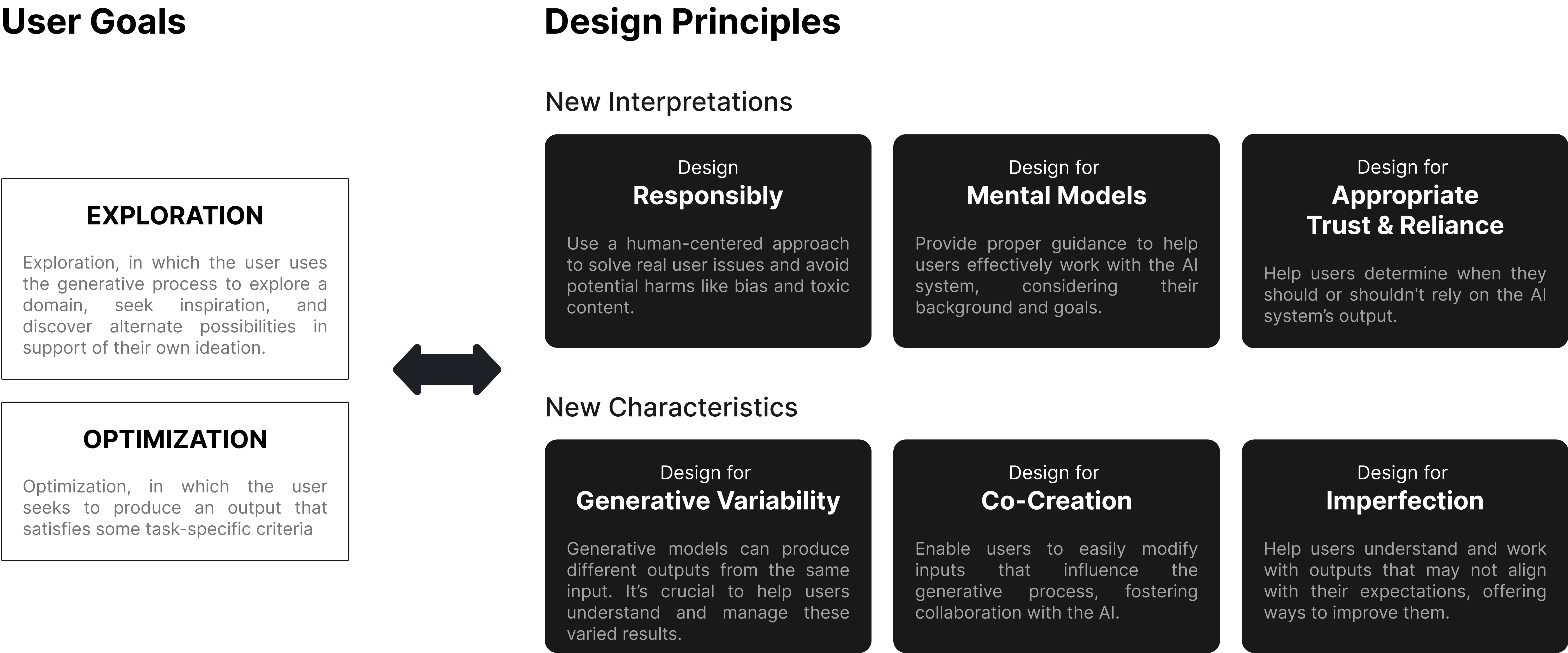
Learning from Real-World
Case Study
Tools like Midjourney, DALL-E, and Stable Diffusion have been widely adopted in the creative industry, with the quality of generated images being undeniably high. In an era where the focus is heavily on technological advancements but often overlooks user experience, how do these tools perform when evaluated by usability?
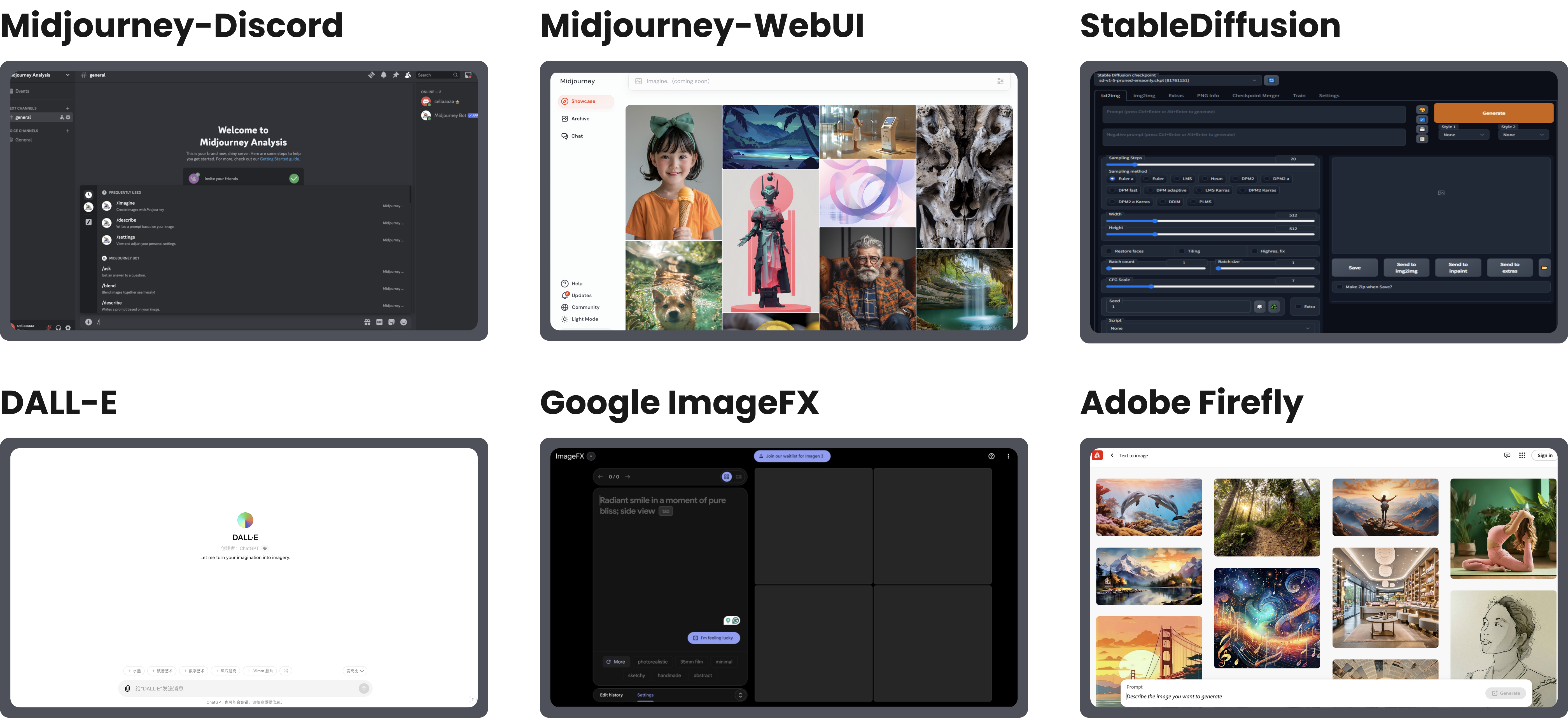
Usability Analysis
In May 2024, IBM’s research group published design principles specifically for GAI. These principles were developed by referencing past HCI principles, incorporating GAI use cases, mental models, user needs, and practical testing. Given their solid development process and effective test results, this research uses IBM’s design principles as a reference for further exploration of interactions between humans and GAI in image creation tools.
Features include:
– Intial User Interface and Features Presentation
– Text to Image Generation
– Image refinement and Adjustment
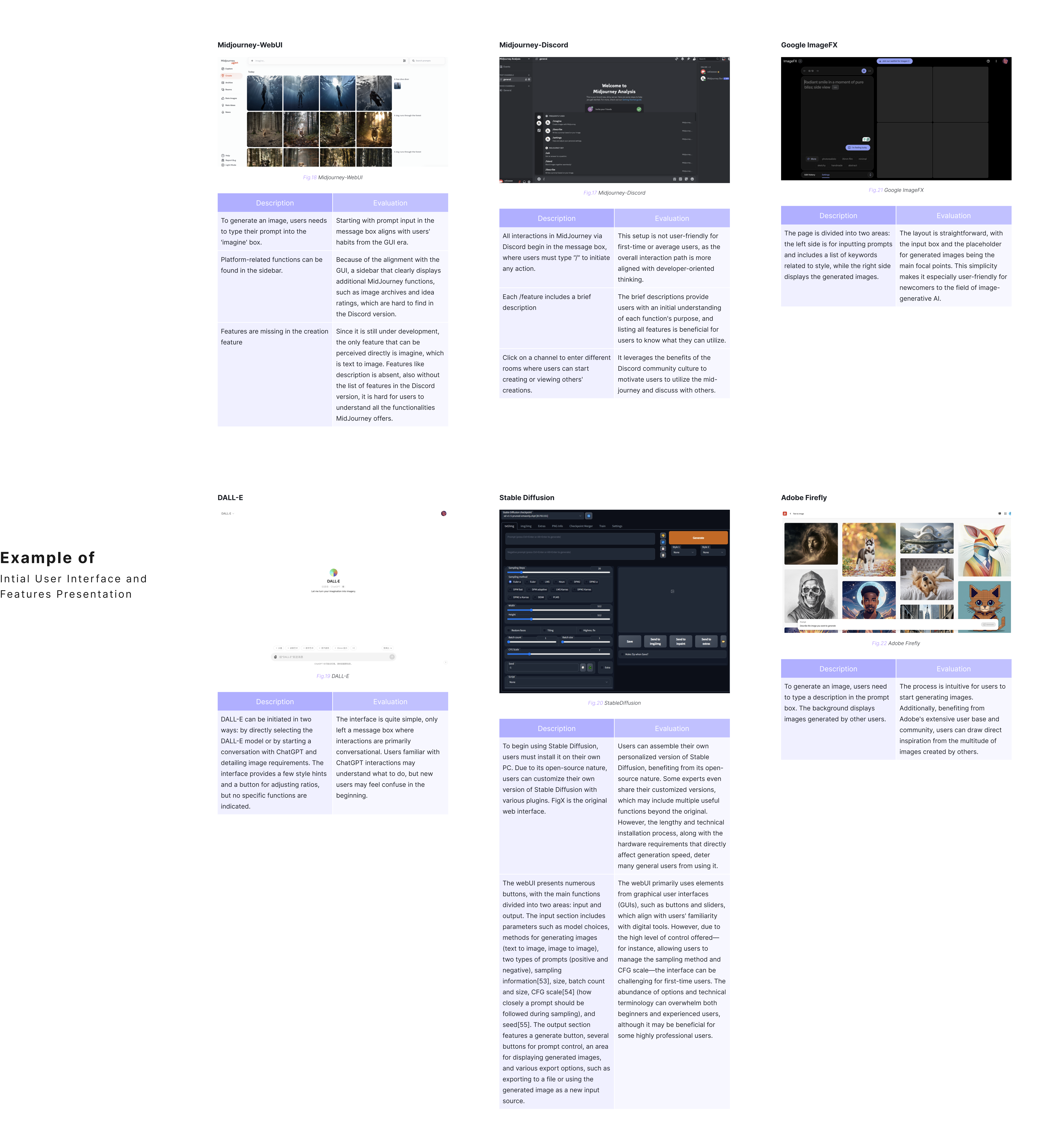
Meet the UX Principles
In conclusion, the three main UX challenges for all tools are:



Learning from Real-World
Interview
Entering a new era of image creation, how do image-generative AI tools impact practical and professional image creation? These tools have proven to significantly influence various fields, whether it’s designers engaged in digital design, artists seeking inspiration, individuals without a design background starting new careers using AI-generated images, or others using AI to express textual ideas.
Mthodology
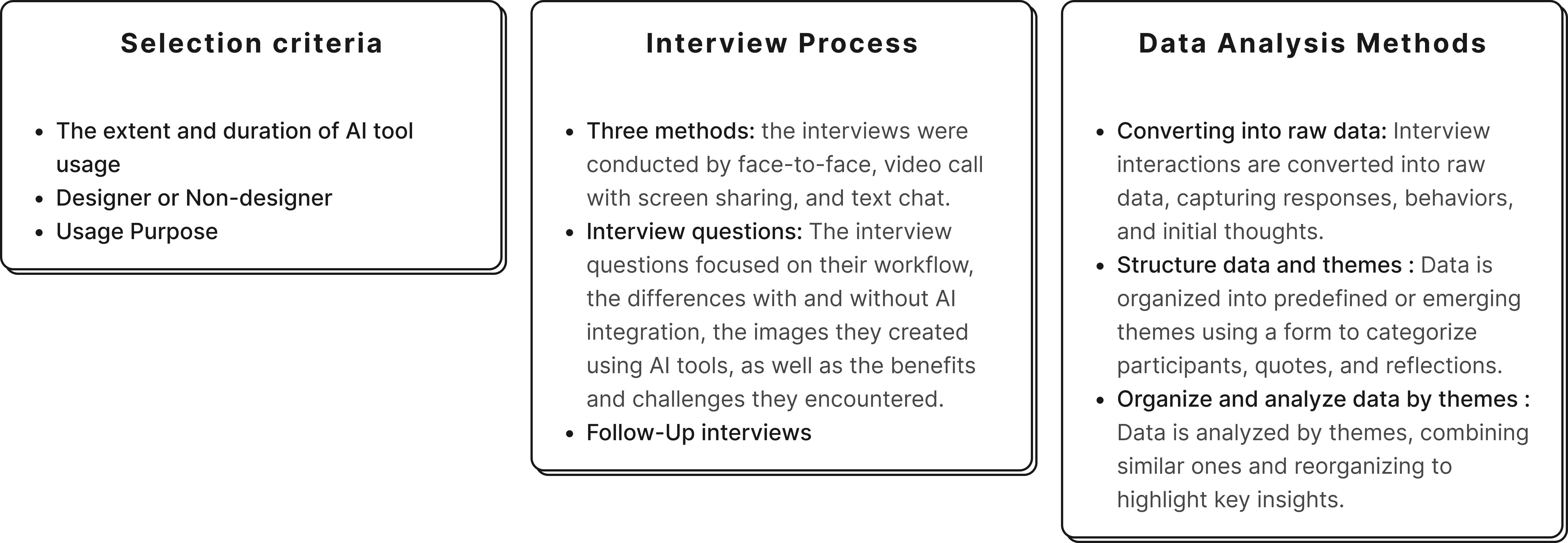
Examples
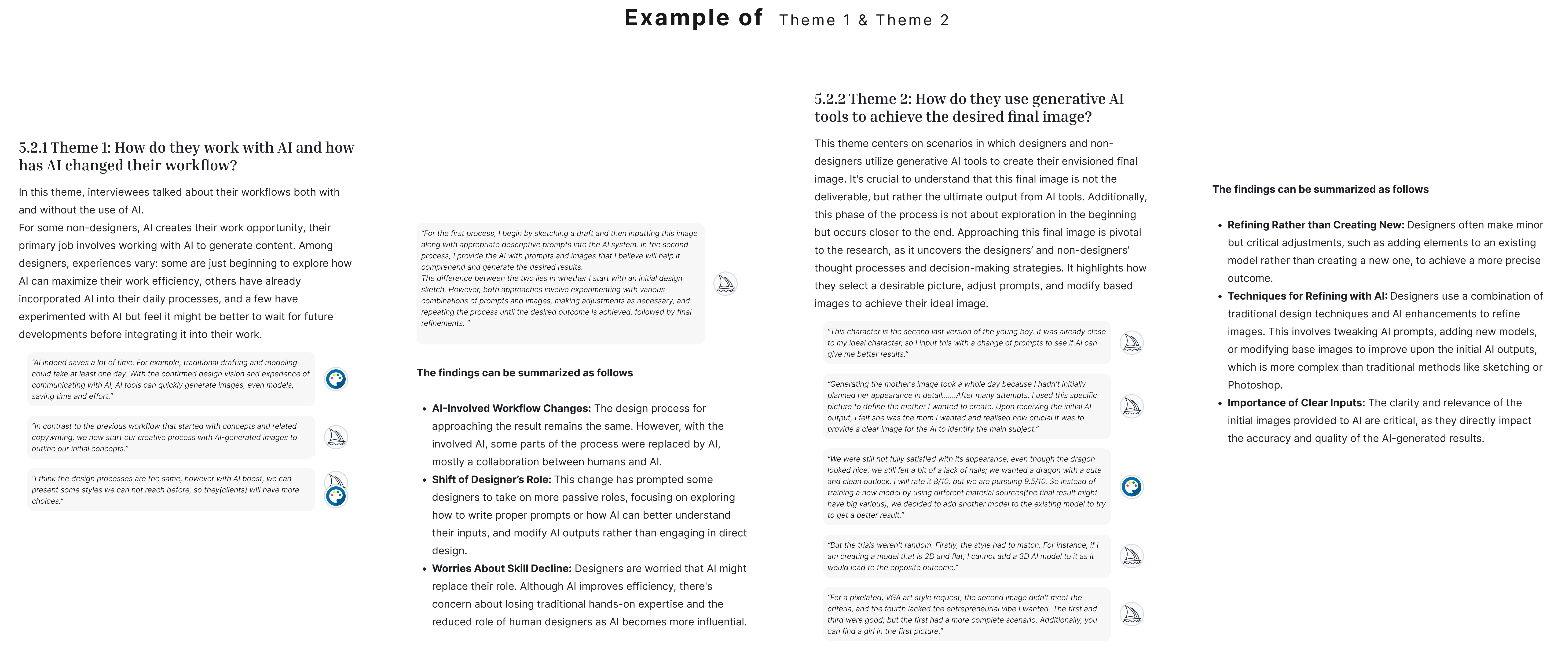
From Insights to Design
Design Proposal
Design Opportunity
The design opportunity aims to address the current challenges posed by AI’s impact on image creativity, striving to bridge the gap to an ideal scenario. The subsequent design concept should focus on resolving issues with existing image-generative AI tools across two phases: the concept phase and the execution phase. By enhancing user experience through improved user interfaces and interactions, this approach seeks to tackle problems related to prompt writing, waiting time, and interface complexity.

The System
To bridge the “Reality” and “Ideally”, I proposed a new AI-driven image generative tool, firstly it should treat exploration and optizimation as separate processes. Exploration should serve as a playground for experimenting with ideas, while optimization should provide users with more options to refine and control their images. And in the last exploration and optimization should be combined to achieve the ideal results
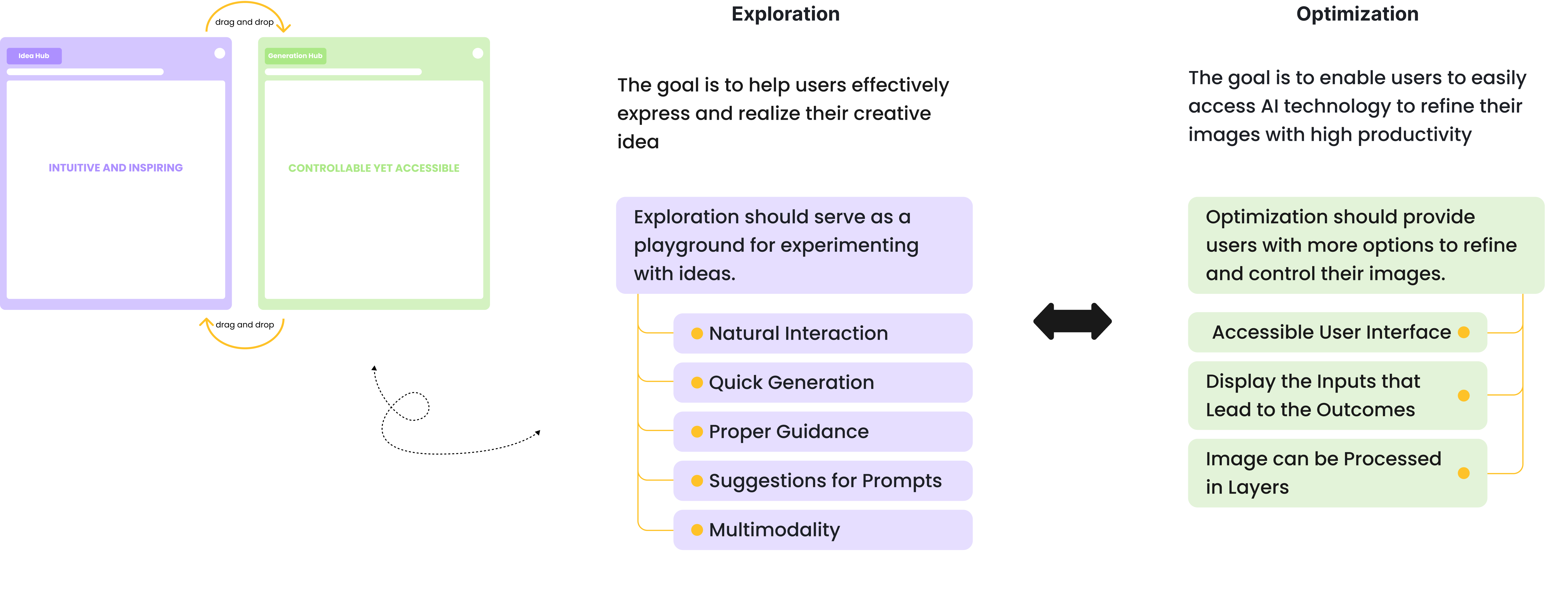
Wireframe
